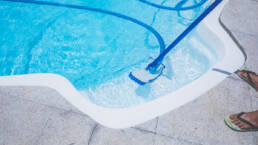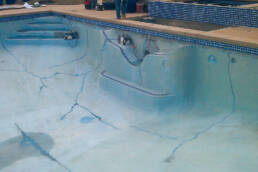If you’re lucky enough to have a swimming pool in your backyard, then you know that keeping it clean is essential for enjoying it during the hot summer months. Pool cleaning can seem like a daunting task, but with the right tools and instructions, it’s not too difficult to take on yourself. That being said, the trickiest part about maintaining your pool on your own is doing it routinely week to week.
In this blog post, we will explain the process of cleaning your swimming pool and provide tips for maintaining it throughout the season.
Remove leaves, debris, and other objects from the pool surface
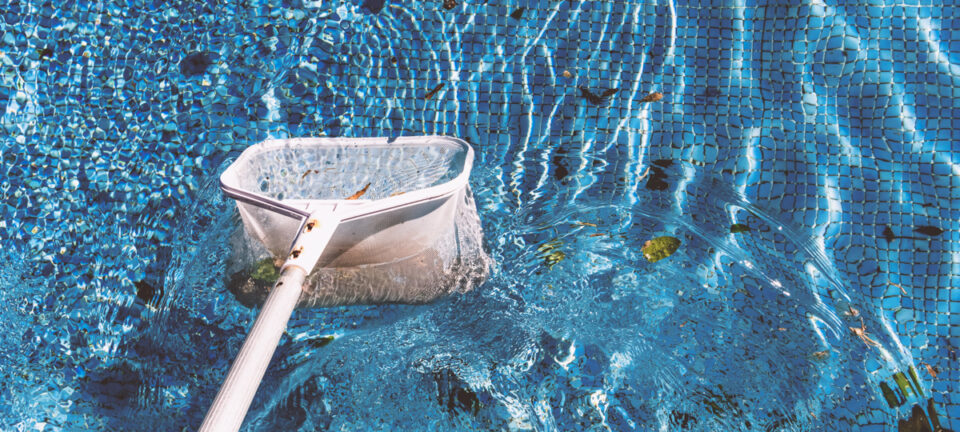
It’s important to regularly remove leaves, debris, and other objects from the pool surface. When your pool is exposed to contaminants, they can offset the pool’s pH level, generate bacteria, and make your backyard appear unkempt and dirty.
It’s important to skim your pool’s surface with a net regularly, and as often as possible to keep your pool clean and clear from bugs, pet hair, leaves, pollen, and more.
Brush your pool surfaces to clean buildup and algae
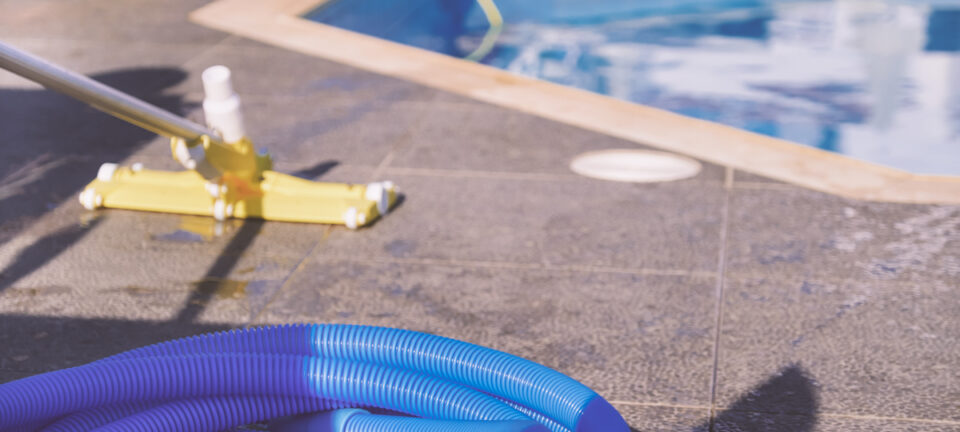
If you want to keep your pool looking its best, you’ll need to regularly clean surfaces and remove any algae. Algae can not only spoil the look of your pool but can also be potentially harmful.
To do so, we recommend brushing the surfaces of your pool above and below water regularly.
Test your pool’s water chemistry and maintain proper pH levels

To ensure your pool is safe and remains clean, you’ll need to maintain the proper pH levels. The pH is a measure of the acidity of the water.
To do this, you will need to purchase a pH level water testing kit and introduce chemicals to balance your water’s chemistry.
The pH scale goes from 0 to 14, where pH 7 is neutral. If the pH is above 7, the water is basic; if it is below 7 the water is acidic.
Optimal pH for swimming — pH 7.4
The optimal pH for pool water is 7.4 since this is the same as the pH in human eyes and mucous membranes. A pH of 7.4 also gives good chlorine disinfection.
Too Acidic — pH under 7.4
A pH level of water under 7.4 is considered too acidic for optimal swimming conditions, which can cause:
- aggressive water, which damages the mechanical components of the pool
- irritations of the eyes and mucous membranes
- damage to the pool liner.
If the pH is too high (acidic), you can use sodium bisulfate to decrease the pH level.
Too Basic — pH over 7.4
A pH level of water over 7.4 is considered too basic for optimal swimming conditions. This can cause:
- poorer chlorine disinfection
- skin irritation
- lime precipitation
- cloudiness
If the pH is too low (basic), you can use sodium carbonate to increase the pH level.
In summary, cleaning your pool is important to do regularly. You should remove leaves and debris from the surface, brush the surfaces to clean buildup and algae, and test your pool’s water chemistry to ensure proper pH levels. We hope you enjoyed this blog post on everything you need to know about cleaning your swimming pool
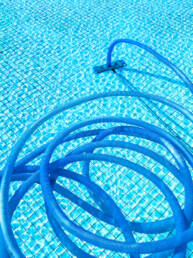
Ready for an expert opinion? Get in touch today!
Laguna Pools is a professional pool and spa contractor that has been servicing the Denver area for over 20 years. We offer routine cleaning and maintenance services, new pool design, construction, and remodeling.
Like this article? Spread the word!
Related Posts
February 10, 2025
Laguna Pools: Denver’s Trusted Pool Builder & Expert Pool & Spa Maintenance Team
Keep your pool in perfect condition year-round with Laguna Pools. From custom pool…
December 20, 2024
Top 10 Trends in Pool Design for 2025
Discover the top 10 pool design trends for 2025, from smart technology to natural pools.…
November 15, 2024
Why You Shouldn’t Neglect Pool Maintenance in Winter: Save Time and Money on Repairs with Laguna Pools
Ensure your pool stays in top shape this winter with expert maintenance from Laguna…


